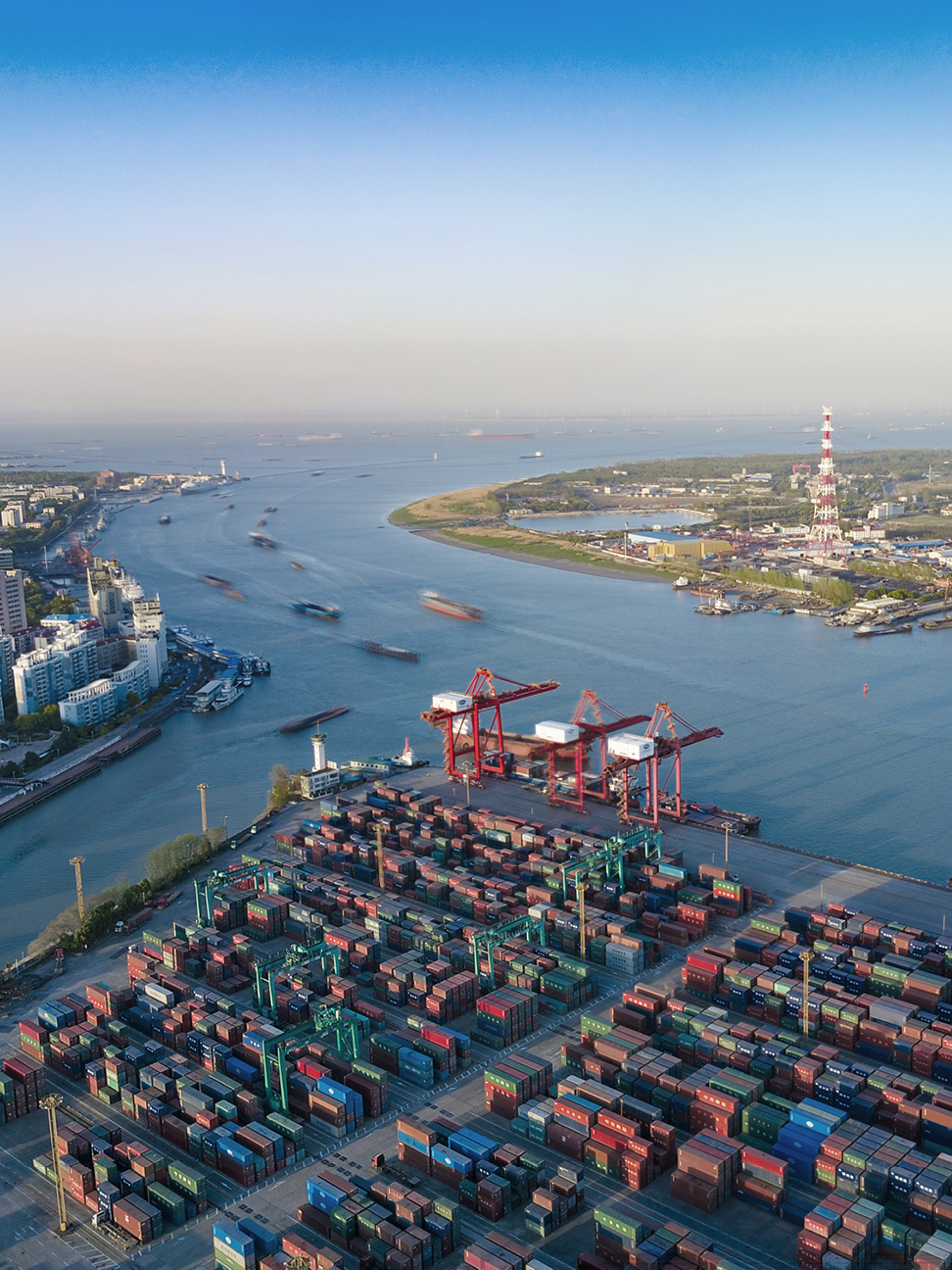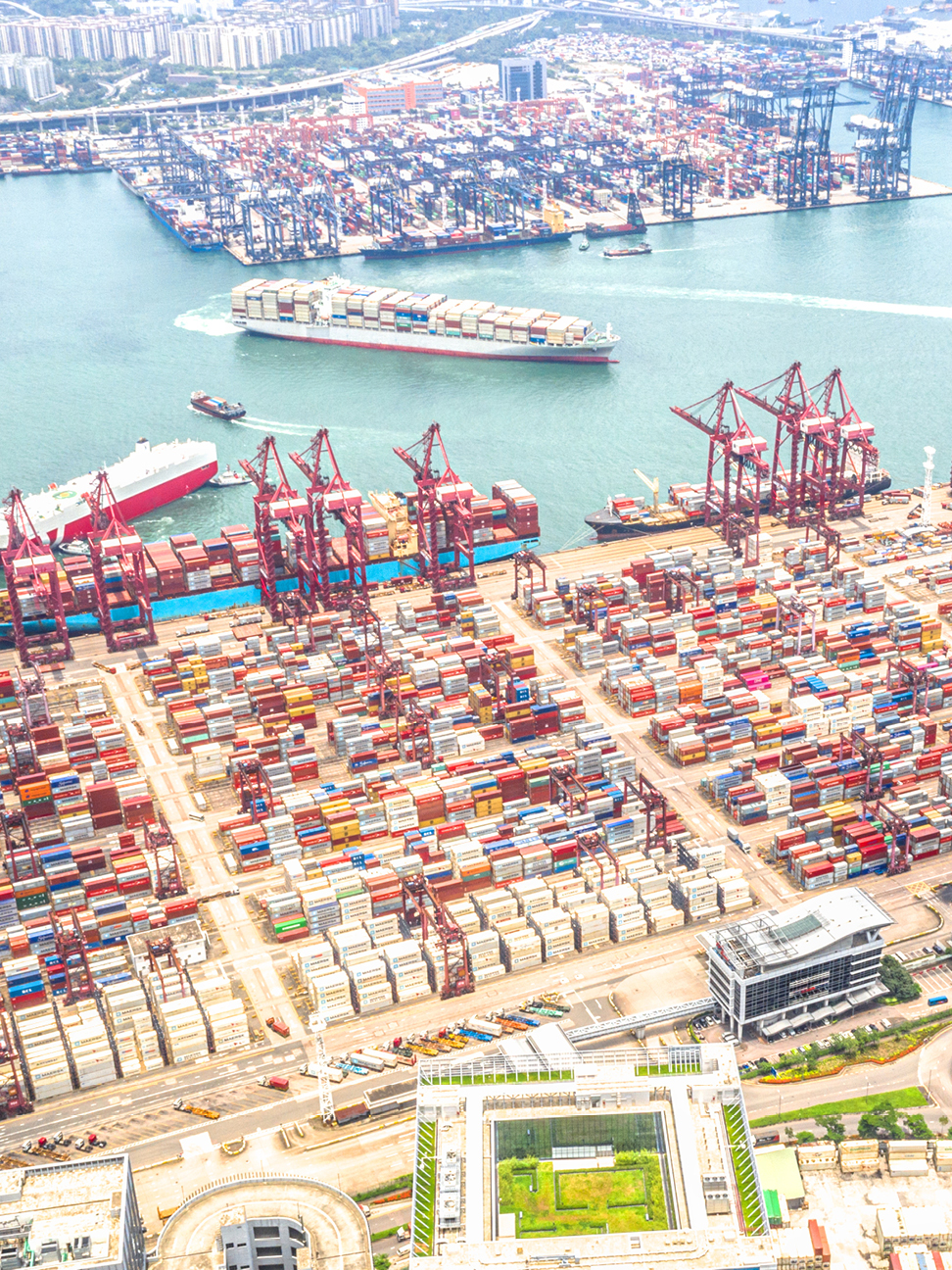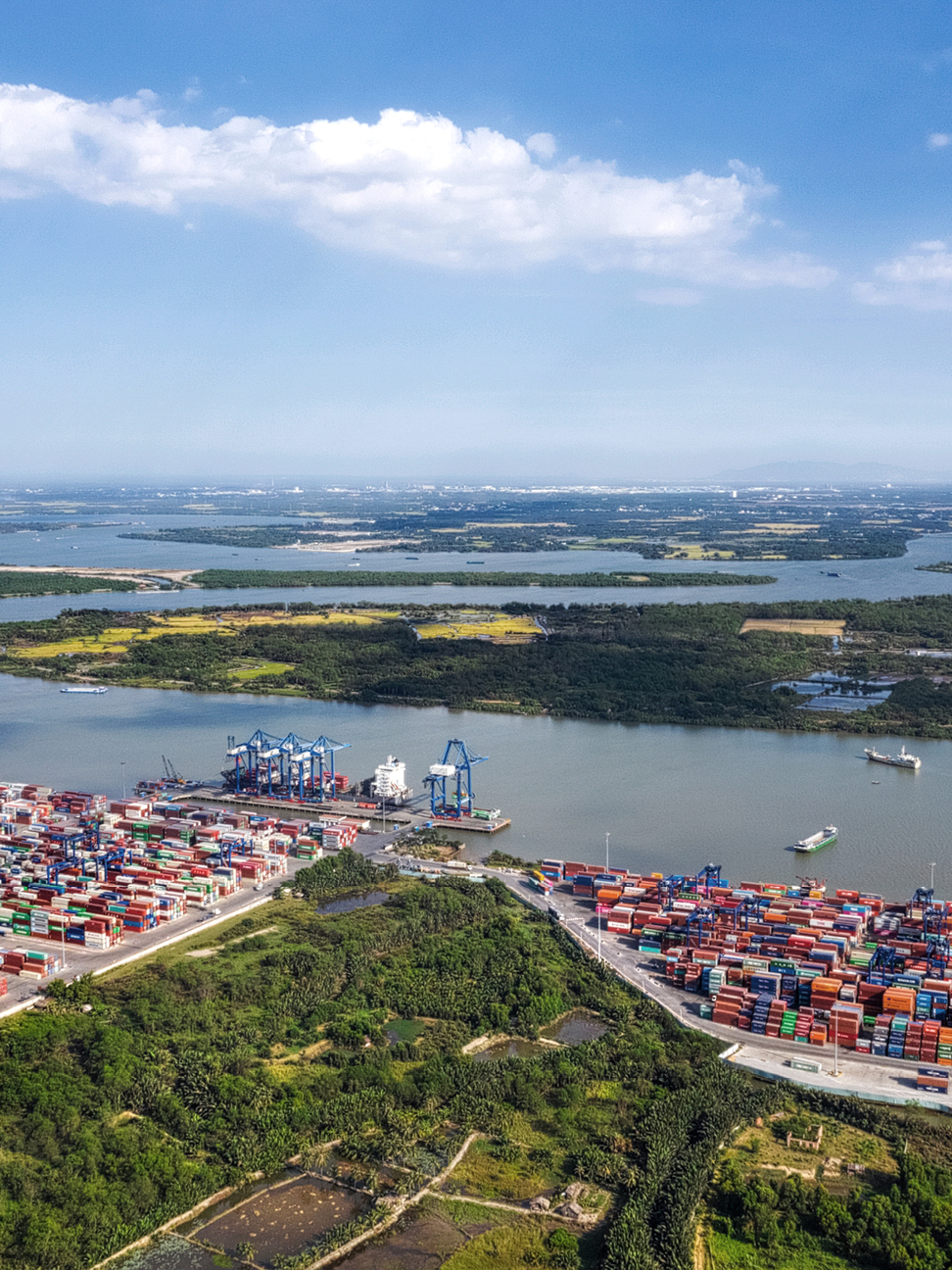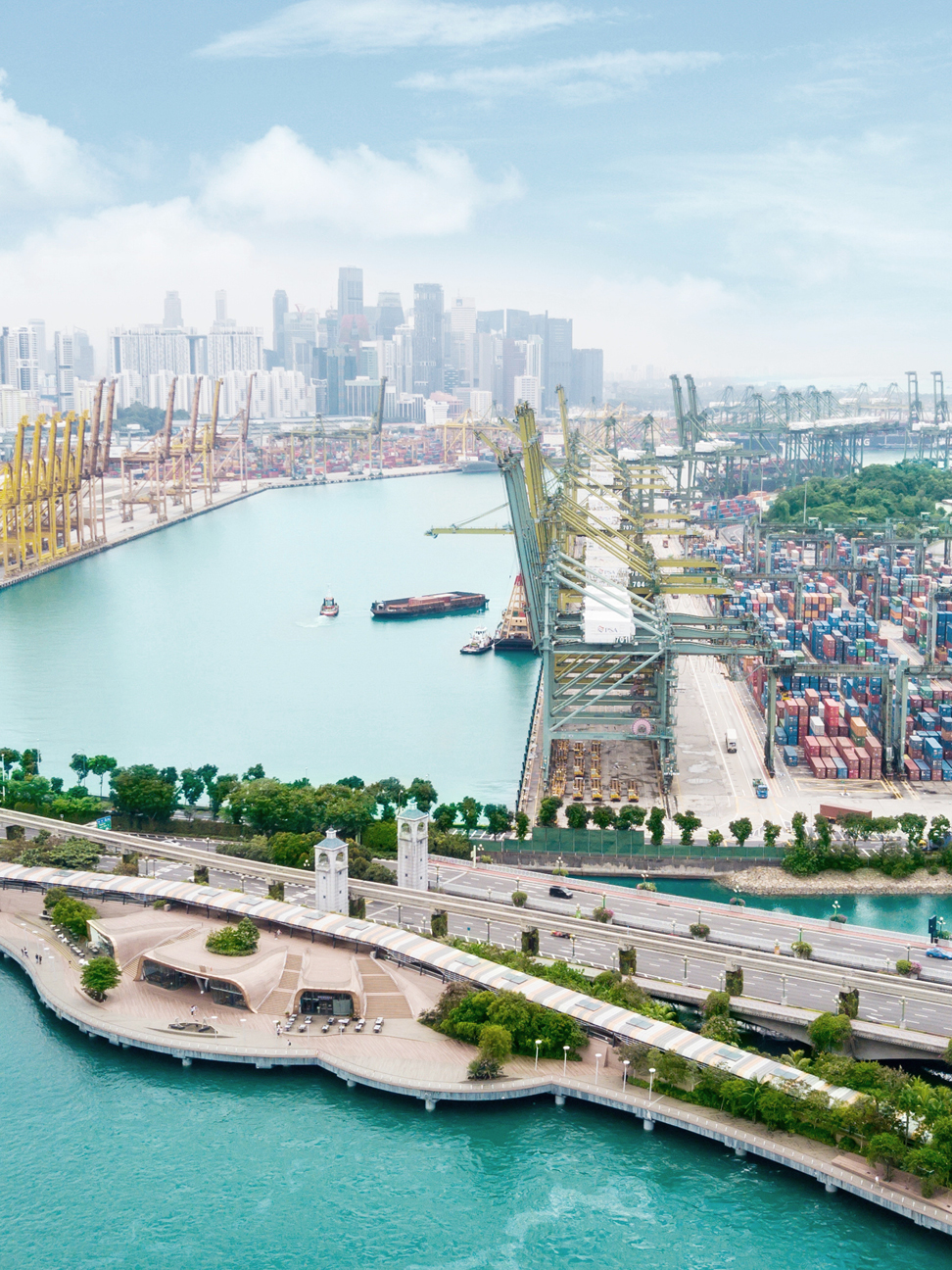Future Cities
2022 Global Seaport Review: Shanghai, China
Navigating evolving global seaport regions and their impact on industrial real estate
December 13, 2022 4 Minute Read

Shanghai’s total imports and exports increased from $434 billion in 2016 to $629 billion in 2021, with an average annual growth rate of 7.2%. Thanks to its connectivity and well-developed infrastructure, the port has close trade ties worldwide and is the first choice for foreign brands entering China.
Overview
The Port of Shanghai is the world’s busiest container port. With volume exceeding 47 million TEUs in 2021, it has held the top spot globally for 12 consecutive years. Volume continues to grow despite COVID-19 lockdowns largely because of the pandemic-induced surge in demand for consumer products. The port is by far the largest by throughput in China, a market which boasts seven of the top 10 ports by TEU volume globally.
In June 2022, the port reached a single-day high of 142,500 TEUs. Port officials plan to further expand capacity by implementing new automation technology to streamline operations. Shanghai’s automated terminal at Yangshan will be capable of handling 26 million TEUs by 2025.
The port covers an area of over 3,500 square kilometers and is located at the mouth of the Yangtze River. It contains river ports and deep-water ports capable of accommodating fully laden post-Panamax ships.
Figure 1: TEU volumes
Source: CBRE Research, Port of Shanghai, 2022.
Figure 2: Population demographics
Source: worldpopulationreview.com, 2022.
Yangshan’s fully automated deep-water terminal will handle 26 million TEUs by 2025
Port features
The three main container port areas, Wusongkou, Waigaoqiao and Yangshan, have a combined quay length of more than 13 kilometers (8 miles), 43 berths and 156 container cranes. The port has two bulk cargo terminals and three break-bulk terminals located in Longwu, Luojing and Wusong.
The Yangshan Deep-Water Port was built on reclaimed land in the East China Sea and is connected to the Mainland via the Donghai Bridge. It significantly increases the port’s ability to handle the world’s largest container ships. Yangshan Phase Four, launched in 2017, is the world’s largest automated container terminal, with a capacity of 6.3 million TEUs, 2.4 kilometers of quays, seven berths, 21 quay cranes, 108 rail-mounted gantry cranes and 125 automated guided vehicles.
Figure 3: Port details
Source: CBRE Research, Port of Shanghai, 2022.
Trade partners
The Port of Shanghai tops the United Nations Port Liner Shipping Connectivity Index. Shanghai’s largest export destination as of July 2022 was the U.S., followed by Japan, Hong Kong, Taiwan and Germany. The largest importers include Japan, the U.S, Germany, Taiwan and South Korea.
Intermodal transportation
In 2019, a joint venture between Shanghai International Port Group and China’s COSCO Shipping was established to improve the port’s insufficient rail network. The project will provide environmental and cost benefits over road transportation. Shanghai also benefits from an extensive canal network and inland connections with major Chinese cities, including Hangzhou, Suzhou, Wuxi and Yangzhou.

Real estate influence
Shanghai, and its satellite cities Kunshan and Taicang, contains 7 million sq. m. of logistics space. Based on the China Logistics Occupier Survey, 38% of respondents would like to expand there, second only to the Greater Bay area.
Shanghai industrial’s market was impacted by strict pandemic controls. While the port kept running under “closed-loop operations,” logistics and leasing activities were hindered. The lockdown-driven surge resulted in high demand from the fresh grocery sector. In Q2, vacancy fell 70 basis points quarter-over-quarter to 8.5% and rents remained stable. While full-year rent growth is expected to be lower than forecasted, CBRE expects the ongoing demand arising from supply chain development and the need for necessities will continue to underpin steady demand for logistics space.
Figure 4: Industrial & logistics market stats
Source: CBRE Research, H1 2022.
Explore Global Seaports by Port
Related Services
- Property Type
Industrial & Logistics
We represent the largest industrial real estate platform in the world, offering an integrated suite of services for occupiers and investors.
- Property Type
Ports
Manage all your integrated logistics needs with services that combine our industrial roots with extensive supply chain experience.
- Consulting
Supply Chain Advisory
CBRE Supply Chain Advisory helps you solve complex business problems and build distinct advantage through supply chain transformations.
APAC Research
Insights in Your Inbox
Stay up to date on relevant trends and the latest research.







